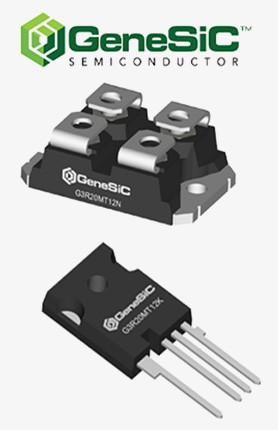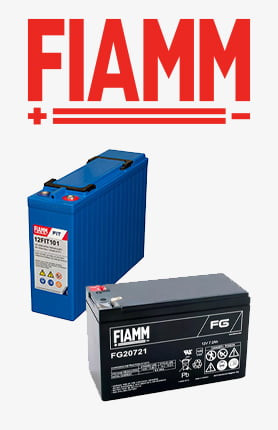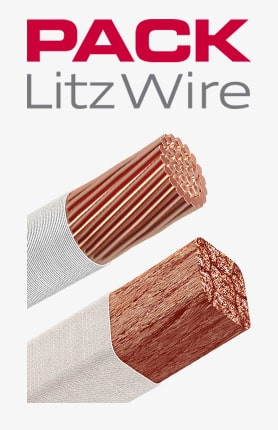-
BackX
-
Components
-
-
Category
-
Semiconductors
- Diodes
- Thyristors
-
Electro-insulated Modules
- Electro-insulated Modules | VISHAY (IR)
- Electro-insulated Modules | INFINEON (EUPEC)
- Electro-insulated Modules | Semikron
- Electro-insulated Modules | POWEREX
- Electro-insulated Modules | IXYS
- Electro-insulated Modules | POSEICO
- Electro-insulated Modules | ABB
- Electro-insulated Modules | TECHSEM
- Go to the subcategory
- Bridge Rectifiers
-
Transistors
- Transistors | GeneSiC
- SiC MOSFET Modules | Mitsubishi
- SiC MOSFET Modules | STARPOWER
- Module SiC MOSFET ABB’s
- IGBT Modules | MITSUBISHI
- Transistor Modules | MITSUBISHI
- MOSFET Modules | MITSUBISHI
- Transistor Modules | ABB
- IGBT Modules | POWEREX
- IGBT Modules | INFINEON (EUPEC)
- Silicon Carbide (SiC) semiconductor elements
- Go to the subcategory
- Gate Drivers
- Power Blocks
- Go to the subcategory
- Electrical Transducers
-
Passive components (capacitors, resistors, fuses, filters)
- Resistors
-
Fuses
- Miniature Fuses for electronic circuits - ABC & AGC Series
- Tubular Fast-acting Fuses
- Time-delay Fuse Links with GL/GG & AM characteristics
- Ultrafast Fuse Links
- Fast-acting Fuses (British & American standard)
- Fast-acting Fuses (European standard)
- Traction Fuses
- High-voltage Fuse Links
- Go to the subcategory
- Capacitors
- EMI Filters
- Supercapacitors
- Power surge protection
- TEMPEST emission revealing filters
- Surge arrester
- Go to the subcategory
-
Relays and Contactors
- Relays and Contactors - Theory
- 3-Phase AC Semiconductor Relays
- DC Semiconductor Relays
- Controllers, Control Systems and Accessories
- Soft Starters and Reversible Relays
- Electromechanical Relays
- Contactors
- Rotary Switches
-
Single-Phase AC Semiconductor Relays
- AC ONE PHASE RELAYS 1 series| D2425 | D2450
- One phase semiconductor AC relays CWA and CWD series
- One phase semiconductor AC relays CMRA and CMRD series
- One phase semiconductor AC relays - PS series
- Double and quadruple semiconductor AC relays - D24 D, TD24 Q, H12D48 D series
- One phase semiconductor relays - gn series
- Ckr series single phase solid state relays
- One phase AC semiconductor relays for DIN bus - ERDA I ERAA series
- 150A AC single phase relays
- Rail Mountable Solid State Relays With Integrated Heat Sink - ENDA, ERDA1 / ERAA1 series
- Go to the subcategory
- Single-Phase AC Semiconductor Relays for PCBs
- Interface Relays
- Go to the subcategory
- Cores and Other Inductive Components
- Heatsinks, Varistors, Thermal Protection
- Fans
- Air Conditioning, Accessories for Electrical Cabinets, Coolers
-
Batteries, Chargers, Buffer Power Supplies and Inverters
- Batteries, Chargers - Theoretical Description
- Modular Li-ion Battery Building Blocks, Custom Batteries, BMS
- Batteries
- Battery Chargers and Accessories
- Uninterruptible Power Supply and Buffer Power Supplies
- Inverters and Photovoltaic Equipments
- Energy storage
- Fuel cells
- Lithium-ion batteries
- Go to the subcategory
-
Automatics
- Spiralift Lifts
- Futaba Drone Parts
- Limit Switches, Microswitches
- Sensors, Transducers
-
Infrared Thermometers (Pyrometers)
- IR-TE Series - Water-proof Palm-sized Radiation Thermometer
- IR-TA Series - Handheld Type Radiation Thermometer
- IR-H Series - Handheld Type Radiation Thermometer
- IR-BA Series - High-speed Compact Radiation Thermometer
- IR-FA Series - Fiber Optic Radiation Thermometer
- IR-BZ Series - Compact Infrared Thermometers
- Go to the subcategory
- Counters, Time Relays, Panel Meters
- Industrial Protection Devices
- Light and Sound Signalling
- Thermographic Camera
- LED Displays
- Control Equipments
- Go to the subcategory
-
Cables, Litz wires, Conduits, Flexible connections
- Wires
- Cable feedthroughs and couplers
- Litz wires
- Cables for extreme applications
- Sleevings
-
Braids
- Flat Braids
- Round Braids
- Very Flexible Flat Braids
- Very Flexible Round Braids
- Cylindrical Cooper Braids
- Cylindrical Cooper Braids and Sleevings
- Flexible Earthing Connections
- Galvanized and Stainless Steel Cylindrical Braids
- PCV Insulated Copper Braids (temp. up to 85C)
- Flat Aluminium Braids
- Junction Set - Braids and Tubes
- Go to the subcategory
- Traction Equipment
- Cable Terminals
- Flexible Insulated Busbars
- Flexible Multilayer Busbars
- Cable Duct Systems
- Go to the subcategory
- View all categories
-
Semiconductors
-
-
- Suppliers
-
Applications
- CNC Machine Tools
- DC and AC Drives (Inverters)
- Energetics
- Energy bank
- Equipment and Components for Hazardous Areas [Ex]
- Equipment for Distribution, Control and Telecommunications Cabinets
- HVAC Automation
- Induction Heating
- Industrial Automation
- Industrial Protective Devices
- Machines for Drying and Wood Processing
- Machines for Thermoforming Plastics
- Mining, Metallurgy and Foundry
- Motors and Transformers
- Power Supplies (UPS) and Rectifier Systems
- Printing
- Temperature Measurement and Regulation
- Test and Laboratory Measurements
- Tram and Railway Traction
- Welding Machines
-
Assembly
-
-
Inductors
-
-
Induction devices
-
-
Service
-
- Contact
- Zobacz wszystkie kategorie
Fans in Control Cabinets – Importance and Role

The control cabinet is one of the key elements of industrial infrastructure. Inside, there are components responsible for control, power distribution, and process monitoring. Since numerous electronic and electrical components operate there, a significant amount of heat is generated. A lack of an adequate heat dissipation system can lead to overheating of the circuits, reduced performance, and even permanent damage. Therefore, it is essential for control cabinets to be equipped with an effective cooling system, with a fan as its core component.
Cooling – a necessity in the industrial environment
Cooling control cabinets is not an add-on but a condition for safe and efficient operation. Heat generated by controllers, power supplies, relays, and other components accumulates in the enclosed cabinet. If the internal temperature exceeds the permissible values for the components, it can cause failures. Ventilation and a properly selected fan ensure air circulation, lowering the temperature inside the control cabinet and extending the lifespan of the components.
Control cabinet cooling – how does the system work?
The cooling system is based on controlled airflow. The fan draws in cooler air from the surroundings, while warm air from inside the cabinet is expelled outside. This maintains an optimal temperature inside the control cabinet. Modern solutions also use filters, ventilation grilles, and sensors monitoring heat levels to optimize system performance.
Fan – a key component
The fan is a basic accessory for control cabinets, responsible for maintaining the proper internal temperature. Depending on the needs, a fan with a filter can be used to protect against dust and contaminants, which is especially important in industrial environments. Installing the appropriate fan increases the efficiency of the cooling system and allows optimal airflow management for electrical and electronic circuits.
System – integration of multiple solutions
The fan does not operate in isolation. The entire control cabinet cooling system includes additional cabinet accessories, such as heat exchangers, ventilation grilles, or air conditioners for more demanding applications. This enables effective cooling even under elevated ambient temperatures. Depending on the installation specifics, passive (convection-based) or active (forced airflow) solutions can be used.
Airflow – a condition for efficiency
Airflow inside the control cabinet is crucial. An improperly installed fan or lack of filters can lead to uneven circulation and the formation of hot air pockets. As a result, some components may overheat faster, reducing system stability. Proper selection and installation of a fan with a filter allow uniform airflow and effective cooling of the entire enclosure.
Enclosure – more than mechanical protection
The control cabinet enclosure not only provides mechanical protection against damage and external factors but also affects airflow and cooling efficiency. A high IP rating protects against dust and moisture but simultaneously requires an adequate ventilation system to maintain the internal temperature within permissible limits.
Ventilation – filters and maintenance
Ventilation in control cabinets must be regularly maintained. Fan filters trap dust that could settle on components and disrupt airflow. Neglecting maintenance can lead to clogged filters, reducing cooling efficiency. Therefore, monitoring filter conditions and regular replacement are mandatory actions for every user of a control system.
Temperature control – system optimization
Modern control cabinets are increasingly equipped with sensors and tools for monitoring temperature. These allow the fan's operation to be adjusted according to current needs. As a result, the cooling system is more energy-efficient and tailored to working conditions. Monitoring the internal temperature and the state of components significantly increases the reliability of the entire installation.
Industrial standard – rising requirements
In industrial settings, where control and distribution cabinets operate under harsh conditions, fans must be highly efficient and reliable. Maintaining proper airflow inside the enclosure affects equipment longevity, process stability, and overall system safety. In industrial applications, cooling control cabinets is standard, and the fan becomes a key element in ensuring efficiency and safety.
Control and distribution cabinets – proper selection is key
Selecting the appropriate fan and cooling system for control and distribution cabinets requires considering many parameters: ambient temperature, the amount of heat generated, and the enclosure’s protection level. Only a properly designed cooling system allows maintaining optimal internal temperature and full control over the operation of the devices.
Conclusion
The role of fans in control cabinets cannot be overstated. They are not only responsible for airflow but are a key part of the entire cooling system, ensuring optimal operating conditions for components. Proper ventilation and regular maintenance can significantly extend equipment lifespan, improve operational efficiency, and prevent costly downtime.
We invite you to explore our offer. Check the available solutions and choose a system suited to your needs.
Related posts
 Thermally conductive materials in power storages
Thermally conductive materials in power storages
 Measuring power and energy in electric circuits
Measuring power and energy in electric circuits
 Wentylatory przemysłowe - rodzaje, właściwości
Wentylatory przemysłowe - rodzaje, właściwości




Leave a comment